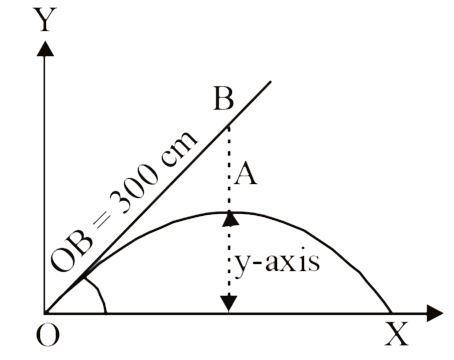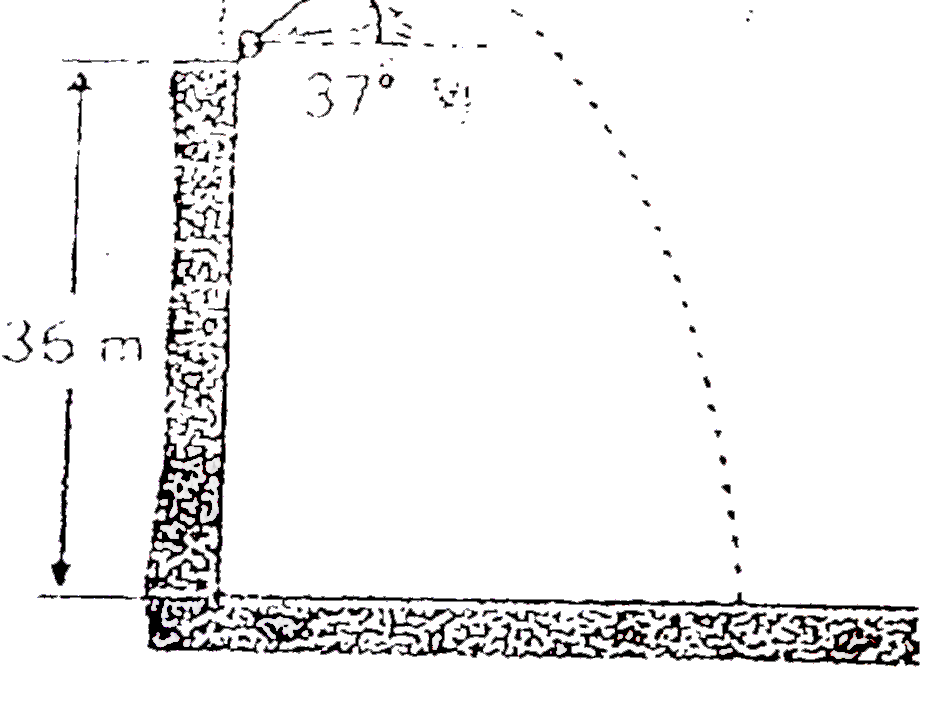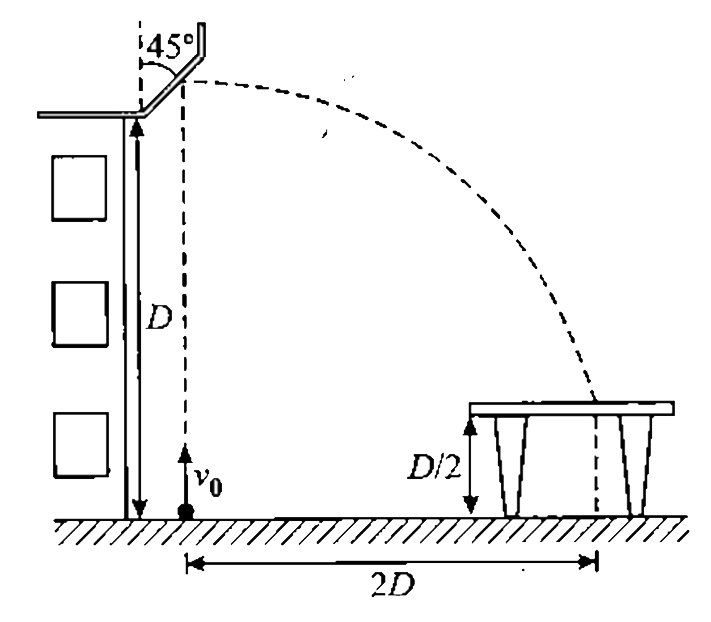A ball 'A' is projected from origin with an initial velocity v0 = 700 cm/sec in a direction 37∘ above the horizontal as shown in fig .Another ball 'B' 300 cm from origin on a line 37∘ above the horizontal is released from rest at the instant A starts. How far will B have fallen when it is hit by A ?

The correct Answer is:[90 cm, horizontal]
Step by step video, text & image solution for A ball 'A' is projected from origin with an initial velocity v_(0) = 700 cm/sec in a direction 37^(@) above the horizontal as shown in fig .Another ball 'B' 300 cm from origin on a line 37^(@) above the horizontal is released from rest at the instant A starts. How far will B have fallen when it is hit by A ? by Physics experts to help you in doubts & scoring excellent marks in Class 11 exams.
Updated on:21/07/2023Topper's Solved these Questions
- KINEMATICSBOOK - PHYSICS GALAXY - ASHISH ARORACHAPTER - KINEMATICSEXERCISE - Advance MCQs with One or More Options Correct
17 Videos
- GRAVITATIONBOOK - PHYSICS GALAXY - ASHISH ARORACHAPTER - GRAVITATIONEXERCISE - Unsolved Numerical
94 Videos
- LINEAR MOMENTUM & ITS CONSERVATIONBOOK - PHYSICS GALAXY - ASHISH ARORACHAPTER - LINEAR MOMENTUM & ITS CONSERVATIONEXERCISE - exercise 1.3
3 Videos
Similar Questions
A ball is projeced from O with an initial velocity 700 cm/ s in a direction 37∘ above the horizontal. A ball B, 500 cm away from O on the line of the initial velocity of A, is released from rest at the instant A is projected. The height through which B falls, before it is hit by A and the direction of the velocity A at the time of impact will respectively be [Given g=10m/s2,sin37∘=0.6andcos37∘=0.8]
View SolutionA cannon ball is thrown with an initial velocity of 40ms at an angle of 53∘ above the horizontal from ground.After some time,the ball is seen to travel at an angle of 37∘ below horizontal.Find the time elapsed (in second) till then.
View Solution
Knowledge Check
A ball is projected from a point A with some velocity at an angle 30∘ with the horizontal as shown in (Fig. 5.204). Consider a target at point B. The ball will hit the target if it thrown with a velocity v0 equal to.
 .A5ms−1B6ms−1C7ms−1DNone of these
.A5ms−1B6ms−1C7ms−1DNone of theseA ball is thrown from the top of 36m high tower with velocity 5m/ss at an angle 37∘ above the horizontal as shown. Its horizontal distance on the ground is closest to [g=10m/s2
 : A12mB18mC24mD30m
: A12mB18mC24mD30mA paricle is projected from a point with initial speed of 10m/sec at an angle of 37∘ with the horizontal. At the same instant a fly starts on the same path of particle with constant speed of 10m/s Then :
Atime taken by fly to complete whole path is less then time taken by particleBacceleration of fly is zeroCaverage velocity of both are same for whole journeyDNone of these
A footballer throws a ball from a height of 2.00m above the ground with an initial velocity of 20.0m/s at an angle of 30∘ above the horizontal (a) How long does the ball take to cross the goal line 32.0m from the point of release?(b) What is the ball's height above the ground as it crosses the goal line?
View SolutionA ball is thrown from the top of a tower with an intial velocity of 10 m//s at an angle 37∘ above the horizontal, hits the ground at a distance 16 m from the base of tower. Calculate height of tower. [g=10m/s2]
View SolutionA ball is projected directly upward with an initial speed v0. Bounces elastically from a roof inclined at an angle 45∘ as shown in figure and then it strikes a table at a horizontal distance 2D from its starting point. Find v0.

View SolutionA ball A is projected with speed 20m/s at an angle of 30∘ with the horizontal from the ground. Another ball B is released simultaneously from a point on the vertical line along the maximum height of the projectile. Both the balls collide at the maximum height of the first ball. The initial height of ball B is
View SolutionA cricketer hits a ball with a velocity 25m/s at 60∘ above the horizontal. How far above the ground it passes over a fielder 50 m from the bat (assume the ball is struck very close to the ground)
View Solution
